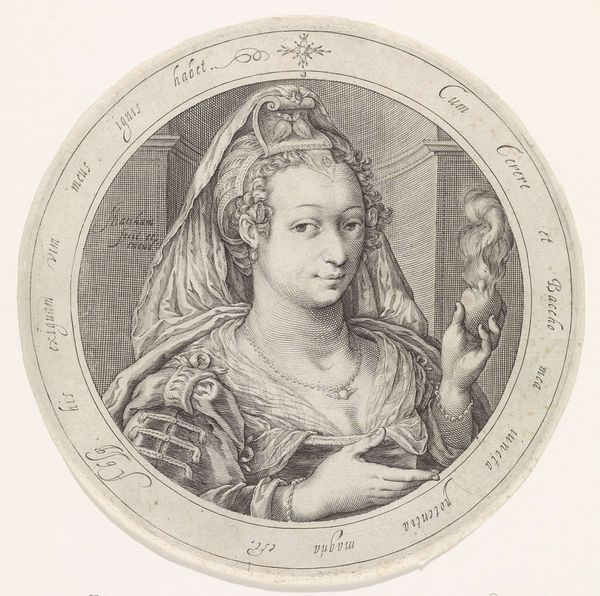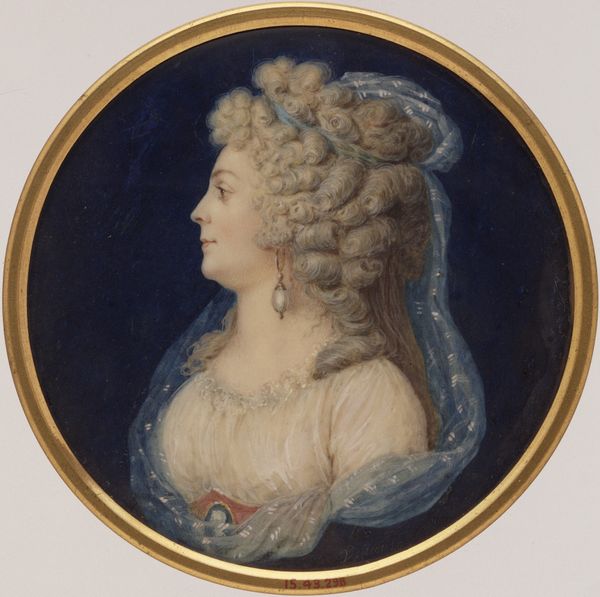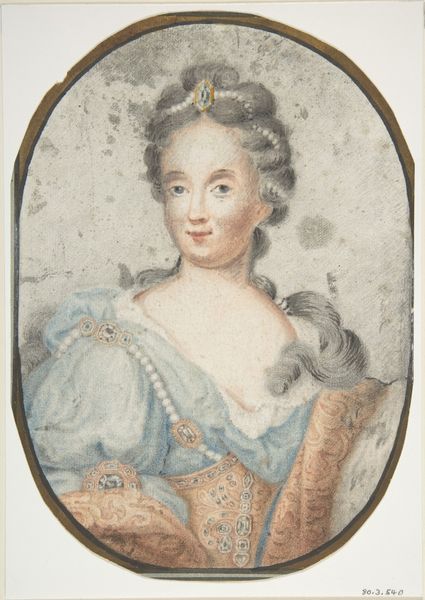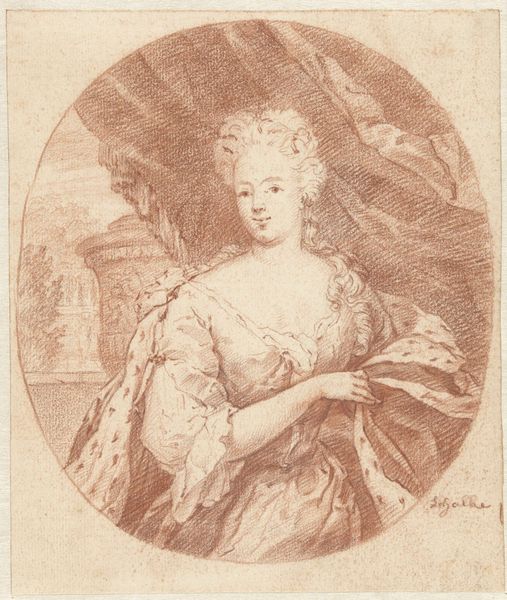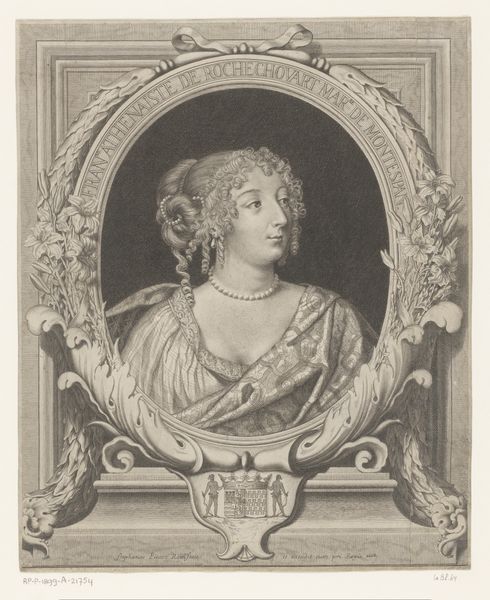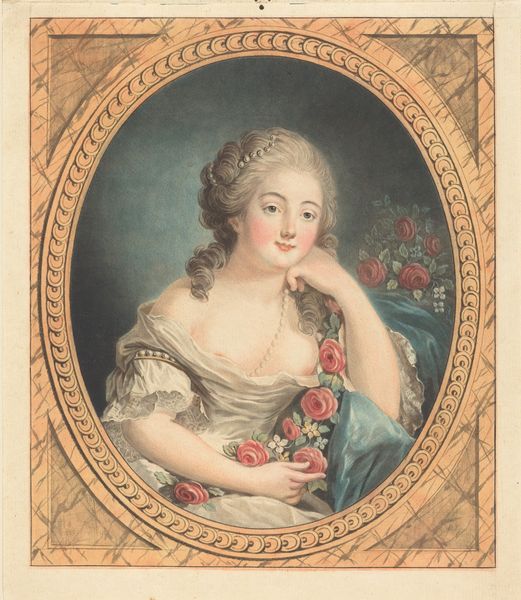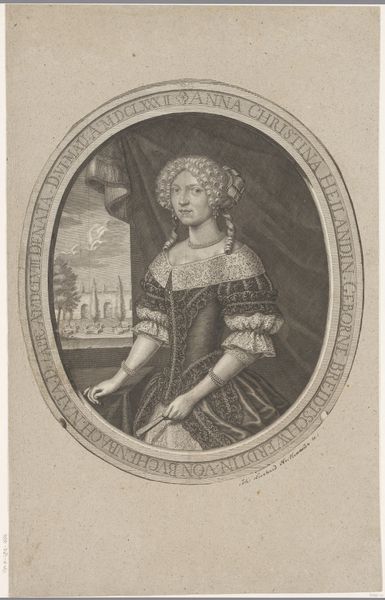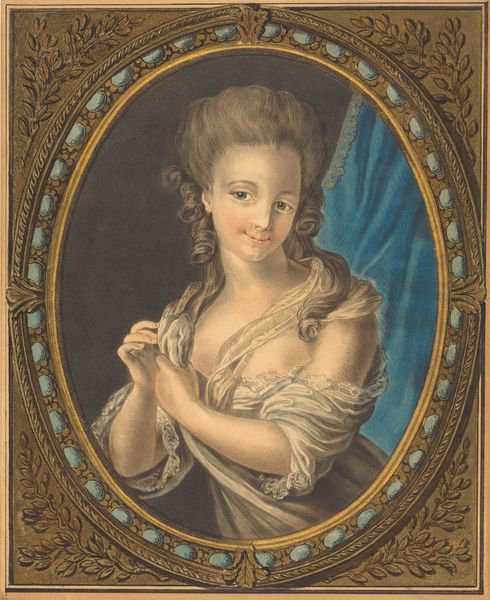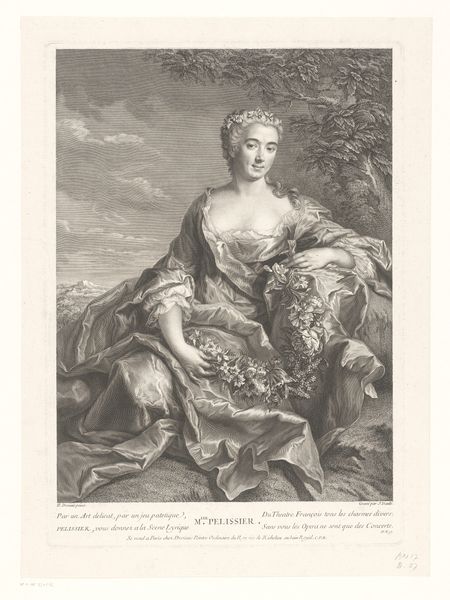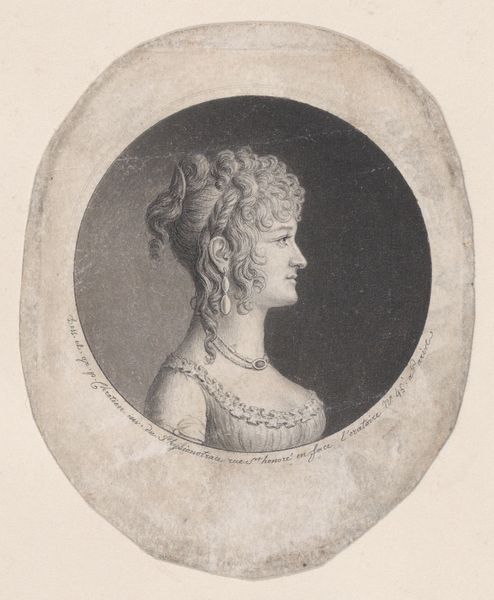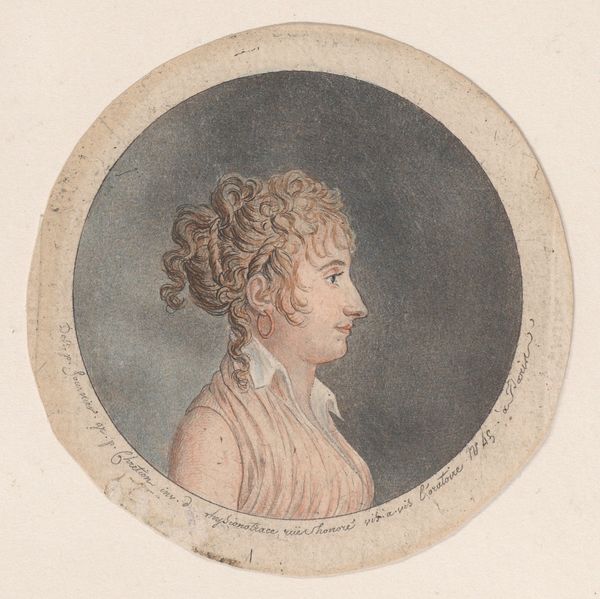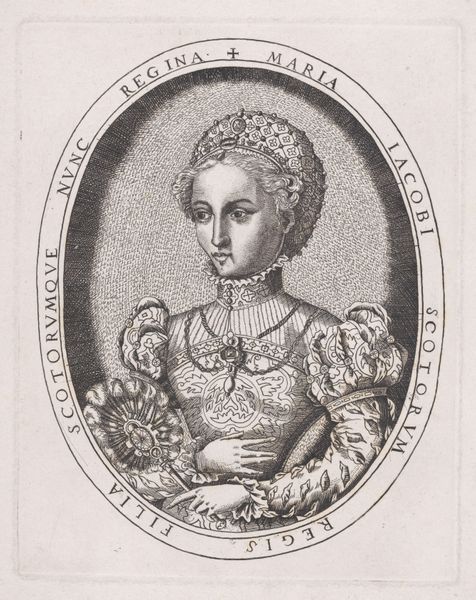
drawing, coloured-pencil, pencil
#
portrait
#
pencil drawn
#
drawing
#
coloured-pencil
#
charcoal drawing
#
11_renaissance
#
pencil drawing
#
coloured pencil
#
pencil
#
portrait drawing
#
northern-renaissance
Dimensions: diameter 120 mm, diameter 137 mm
Copyright: Rijks Museum: Open Domain
Curator: The Rijksmuseum holds this enchanting drawing, "Diana in een ronde omlijsting," by Jacob Matham, created in 1602. I am immediately drawn to its delicate nature and use of colored pencil. Editor: It has a dreamy, ethereal quality. The soft hues of the pencil work create an otherworldly scene, almost as if it is captured in the golden hour. Curator: The portrait shows the goddess Diana with two dogs and in her hand what looks like an arrow; Matham employs subtle washes of color to define her features. Looking at this piece, it reminds me of the traditional labor divisions inherent in early modern printmaking and drawing. Editor: Let's consider the imagery of Diana, the Roman goddess of the hunt, wilderness, moon, and chastity. In this Northern Renaissance portrait, we see her encircled by her emblems: her canine companions, the forest landscape, and of course the tool for the hunt. What might her presence within this composition imply about beauty standards or societal expectations during that era? Curator: An interesting point; I would extend that to consider the paper itself, most likely high-quality laid paper which carries a history of production processes, trade routes, and social stratification. Consider too Matham's involvement in the business, reproducing prints of other artists' works. Diana is here being marketed, retailed through a commodity network. Editor: Precisely. Also think about how dogs often represent fidelity, guardianship, and instinct – traits perhaps assigned to women of the time. So here, she's not only a figure of independence as a huntress, but of prescribed feminine virtues, constrained to fit societal expectations. Curator: Very much! She is almost an adornment. Consider the skill that must have been deployed in her creation; time, access to tools, the economics behind these are an untold element of the art we observe. Editor: It makes you wonder about the people that consumed or used such items at this time and what those things signified to them. "Diana in een ronde omlijsting" is indeed beautiful, but for me, it becomes especially powerful through considering its symbolism. Curator: Understanding the world and conditions required to make the piece connects us to the past. Thanks for sharing your ideas, which helped consider those connections more deeply! Editor: And thank you for prompting an enriching reflection on the deeper symbolic language held in this image!
Comments
No comments
Be the first to comment and join the conversation on the ultimate creative platform.
